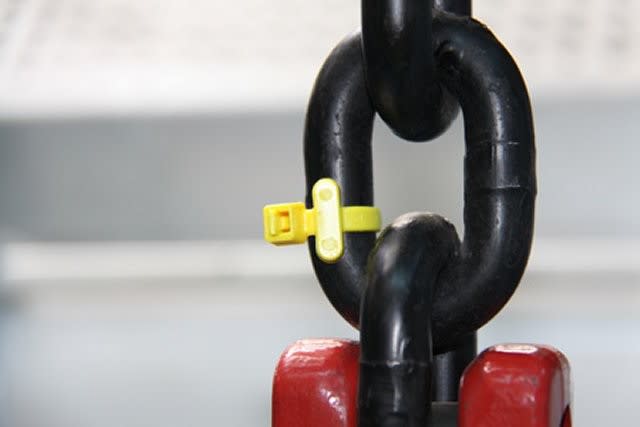RFID Tag Cable Tie
Follow articleHow do you feel about this article? Help us to provide better content for you.
Thank you! Your feedback has been received.
There was a problem submitting your feedback, please try again later.
What do you think of this article?
What is RFID?
Radio frequency identification, or RFID, is a term coined for technologies that use radio waves to automatically identify something, such as a pet, a person or an object. A common form of RFID is one used to store a serial number, or other data on an object with a microchip, that is attached to an antenna. These two items together are called an RFID transponder or an RFID tag, the antenna enables the chip to transmit its data to a reader. The reader will then convert the radio waves from the RFID tag into digital information that can by computers.
There is an ever-increasing need for businesses to ensure traceability and to maintain records for calibration, location and maintenance requirements so that they adhere to current quality and accreditation standards.
With this in mind, Hellermann Tyton has developed a range of nylon identification cable ties with RFID tag technology that enables you to easily apply an RFID tag to equipment (829-6114) and (829-6105) . There, important data such as serial numbers, calibration or maintenance schedules can be stored. These RFID tag cable ties can then be read with handheld scanners to deliver accurate and reliable reporting information at any time with the minimal of fuss. Data can be received without line of sight, and the RFID transponders can be read regardless of orientation and through virtually any material, including mounted within metal containers.
Ideal for use in many industrial environments, including very wet and dusty and corrosive, these RFID tie wraps acts as a tracker when labelling and barcodes cannot, and take away the chance of being read in error or simply not being read at all.
RFID Cable Tie Characteristics
- Material: Polyamide 6.6
- Operating temperature -40 to +85°C continuous (+105°C for 500 hours)
- Flammability rating UL94V
Applications include
- Theft prevention
- Keg and gas cylinder tracking
- Asset management
- Attendance verification
- Security tagging
- Leak detection
- Essential maintenance
- Baggage tagging
Benefits of RFID
- Elimination of clerical errors in recording data
- Faster data collection
- Reduction in labour
- Reduction in paperwork required
- Ability to hold more data than barcodes
- Eliminating paper-based inspections/reporting
- Manage equipment inspections, maintenance work etc.
- Comply with legislation
- Generate equipment reports
- Control your stores' management
- Increase reporting and inspections accuracy
- Share up to date information
Advantages of RFI over other ID technologies
- Reliable operation in harsh environments (i.e. wet, dusty, dirty conditions, corrosive environments, vibration and shock)
- No need for contact or line-of-sight
- Freedom from line-of-sight constraints
*UPDATE*
Download the RS RFID/NFC Reader App today to read and identify NFC and high-frequency RFID tags.


